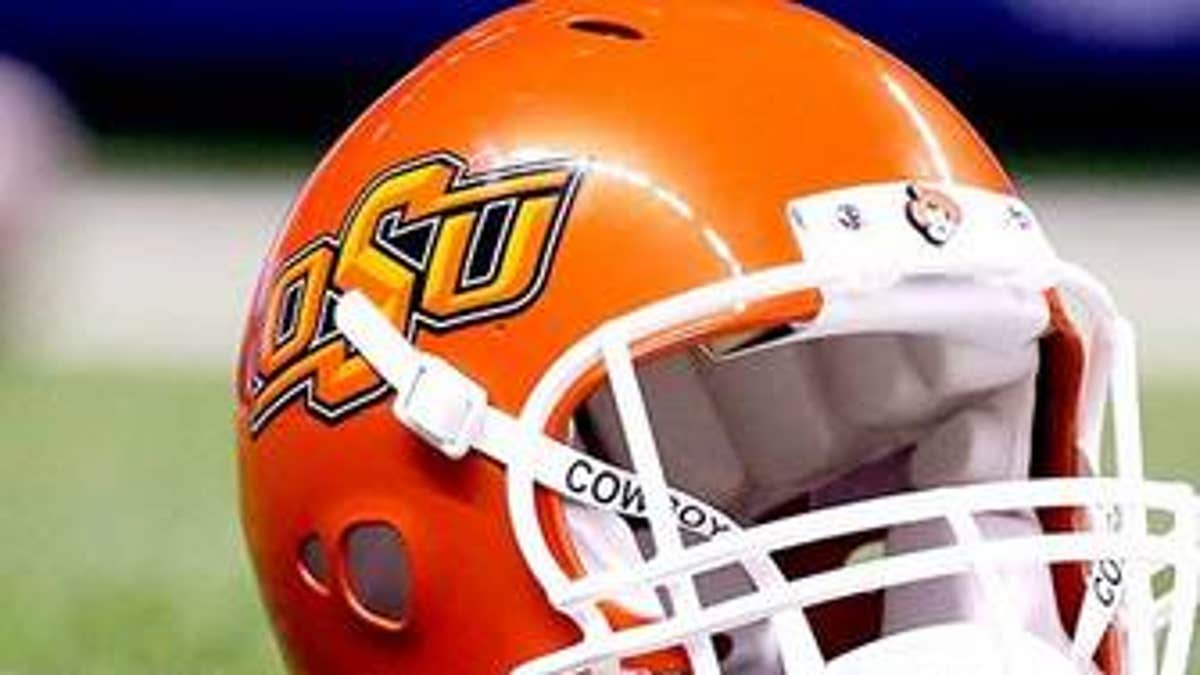
Stop me if you've read this before: On Monday, the first installment dropped in a weeklong Sports Illustrated investigative series on corruption in the cash cow that is amateur sports. This time the corruption is alleged in Oklahoma State's football program, but some other year it was some other program, with varying manner of sin: Miami or Penn State or Ohio State or USC.
This time, though, it's different. Because the allegations of a culture of corruption at Oklahoma State come at a time when the paradigm has shifted in how we view the myth of amateurism.
By now we should all understand the inherent and obvious paradox in this multi-billion-dollar-a-year industry: The prime money-generators, college football players, don't really get paid. We should all see that Ed O'Bannon has a good point in suing the NCAA over rights to his likeness, because it's so clearly silly that a person wouldn't be in control of his own image.
We should all admit that Johnny Manziel likely did break a rule in selling -- er, donating -- his signature to memorabilia dealers, but at the same time we should know that the rule itself, that a player can't make money off his own signature, feels kind of Soviet in this capitalist country.
We should see the truth when people such as Ramogi Huma, head of the National College Players Association, calls the NCAA a "cartel" and refers to major college sports as the most prominent anti-capitalist organization in America.
And we should read the tea leaves and see that something is changing in the way major college sports are structured in our country.
Still, it's long been a staple of sports journalism to print the salacious details of deviants ruining the purity of amateur sports. (See: SMU, pay-for-play and the NCAA death penalty; UNLV, hot tubs and Gucci row; Michigan, Chris Webber and wealthy boosters; etc., etc., ad nauseum.)
To this genre Sports Illustrated's reportage appears a worthy addition. The first day of the SI series showed boosters who gave players "$500 handshakes," an assistant coach who ran a bonus program for standout play that meant cash-stuffed envelopes for star players, and players who were paid for easy or fake jobs, like $400 to take a Christmas tree out of a booster's attic.
If you haven't read it yet, you should, especially since the rest of the series promises more salacious details: academic fraud, rampant recreational drug use, high-school recruits having sex with football "hostesses" -- woo hoo! -- and sad endings for some former players who were driven out of the program and back to the difficult lives they'd lived in their childhood.
A decade ago the reaction to such allegations would be universal finger-wagging over Oklahoma State's sins.
But today's reaction: This is what passes for a big, bold-faced scandal? Football players smoking weed and having sex and getting paid just a small cut of the money they generate for the university?
Who cares?
The final line in the first part of the series was the one that jumped out to me -- not an example of how dirty the Oklahoma State football program appears to be but instead an example of how minor this corruption is compared to the vast pots of money tossed around in major college sports.
"At Oklahoma State the bonus system, the booster and coach payouts, and the bogus jobs provided players with money that was seldom spent on extravagances," the first part of the series concluded. "One or two standouts bought a new car or expensive jewelry, team members say, but the vast majority of the players used the extra cash to purchase everyday items -- food, clothing, tickets to a movie. 'There were some athletes who were almost starving,' says (former Oklahoma State safety Fath') Carter. 'Wherever the money came from, they were like, Yeah, I'll take that.' "
I don't buy that a single Oklahoma State Cowboy was actually starving -- training tables are pretty impressive these days. But the bigger point, one that is lost amid the big, bold accusations, is just how small a couple of hundred bucks in an envelope is compared to the money in big-time college sports.
Last year the Big 12 Conference signed a 13-year, $2.6 billion contract with ESPN and FOX to television football and basketball games. That adds up to about $20 million per school per year, a comparable television contract as other conferences like the Big Ten and Pac-12.
Where does that extra money go? Not to the players, whose scholarships don't even cover the actual cost of attendance. (Studies have shown the actual cost of college attendance to be about $3,000 more than athletic scholarships; the NCAA board has yet to approve a proposed $2,000 increase in scholarships to defray those costs.)
No, the extra money goes to highly compensated coaching staffs, and to bloated administrative departments, and to facility wars that are getting more outrageous every year. It should not be lost on those trying to shame Oklahoma State that some of the alleged "sham jobs" football players were working, according to the SI report, were working on the $174 million renovation of the football stadium and other athletic facilities.
Wait a second. You can spend nearly the payroll of the New York Yankees on constructing a stadium, but you can't pay a player -- someone who can't exactly go get a work-study job on the side -- a few hundred bucks for playing inside that shrine to football?
If the Sports Illustrated report proves correct, it will appear Oklahoma State is guilty of breaking any number of NCAA rules. The first day of the piece is chock-full of potential violations, though none of them seemed particularly surprising in a major college sport.
But here's the bigger question: How should you judge someone's guilt in breaking rules when the rules aren't really worth following?
Follow Reid Forgrave on Twitter @reidforgrave or email him at ReidForgrave@gmail.com.
